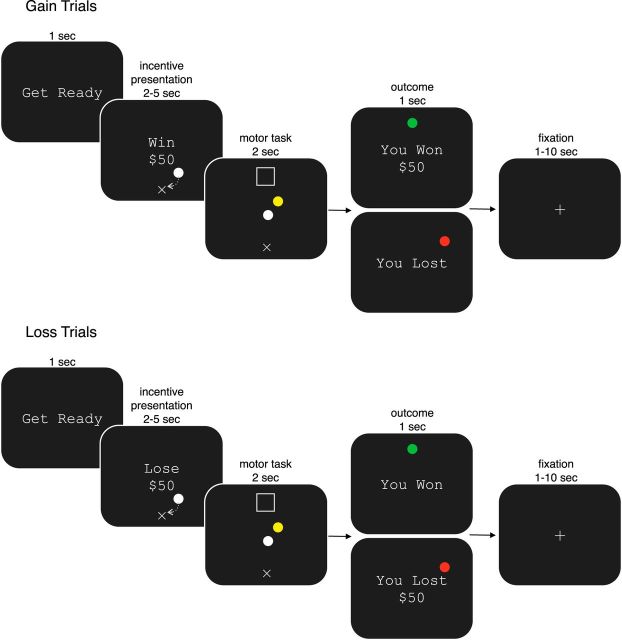Figure 1.
The incentive-based motor task. At the beginning of each trial, participants were presented with the incentive (e.g., Win $50, Lose $50) for which they were playing. During incentive presentation, to initiate the motor task, participants placed their white hand cursor in the start position (×) for a random amount of time (2–5 s). During the task, a target (□) appeared that was registered to a position 20 cm distal from the start. To successfully achieve the task, participants had to place their hand cursor and a mass cursor into the target within 2 s, while achieving a final velocity <0.02 m/s. At the end of the trial, they were shown a message indicating the outcome of their performance (e.g., “You Won” or “You Lost”). For gain trials, participants were to successfully perform the task for the possibility of winning an amount of money; if they were unsuccessful, they lost nothing. For loss trials, participants were to successfully achieve the task to avoid losing an amount of money; if they were unsuccessful, there was the possibility they would lose the amount presented on that trial. In the case that a participant successfully placed the spring mass in the target, a positive message was displayed (“You Won $50” or “You Won”); otherwise, the participant was informed of her negative outcome (“You Lost” or “You Lost $50”).

